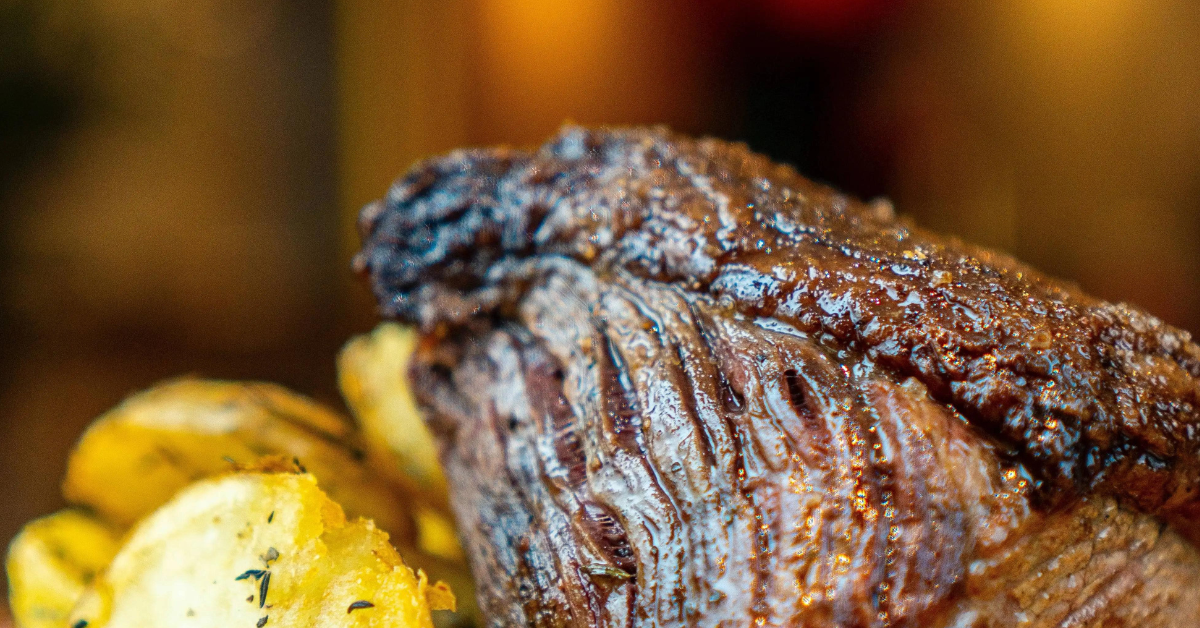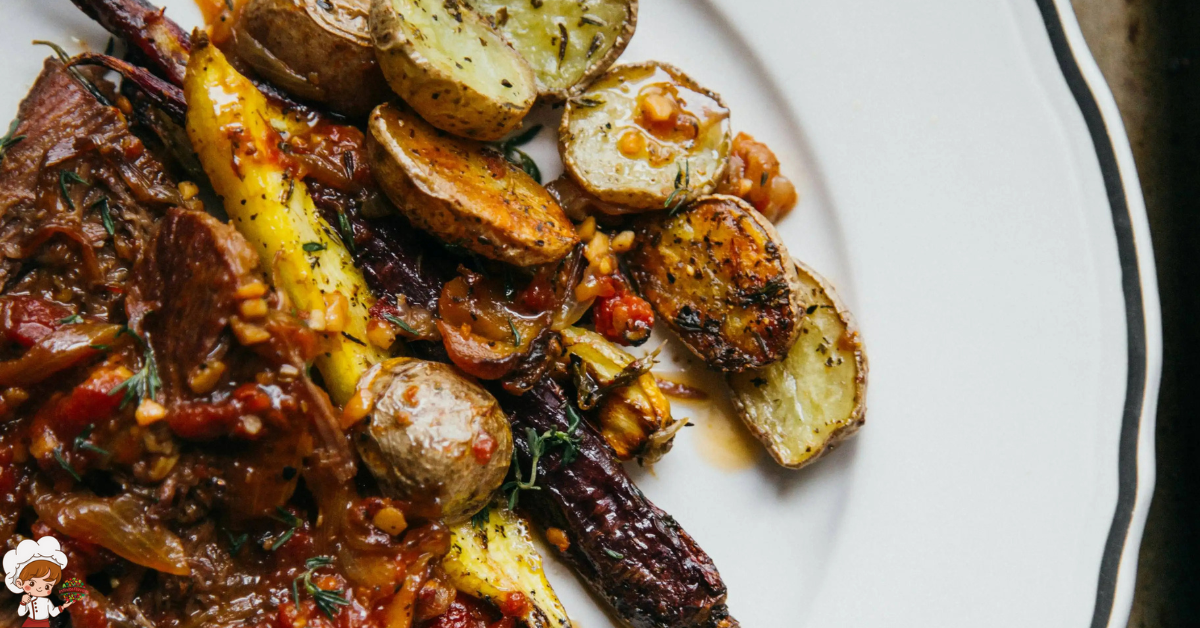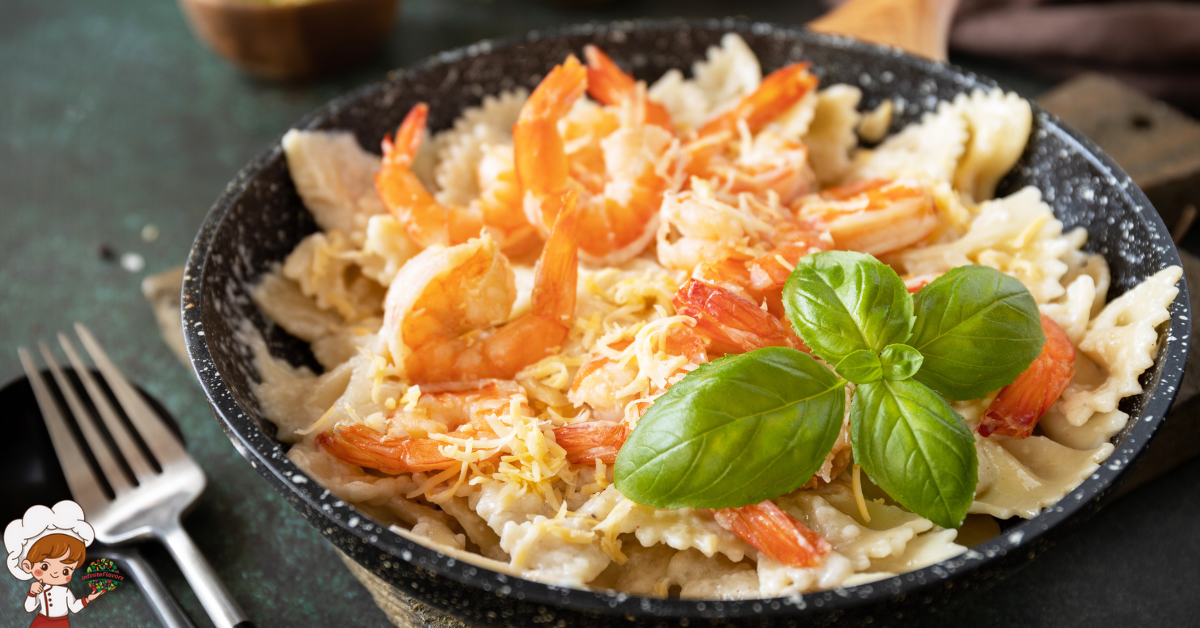The Best Spiciest Dishes In Egyptian Cuisine

If you’re looking for the Spiciest Dishes In Egyptian Cuisine, you’ll want to try a few standouts. Dajaj Mashwy, grilled spicy chicken marinated in a mix of flavors, packs a punch. Koshari combines rice, lentils, and pasta topped with a zesty tomato sauce and chili peppers. Don’t miss Hawawshi, spiced meat pockets that are a must-try street food. For a seafood twist, Sayadiya features marinated fish served with fragrant rice. Finally, enjoy some bold Dakkous chili sauce to elevate any meal. There’s so much more to explore about the rich flavors of Egyptian cuisine.
Dukkah: A Spicy Nut Blend
Dukkah embodies the vibrant spirit of Egyptian cuisine with its unique blend of spices and nuts. You’ll find that this delightful mixture has roots deeply embedded in traditional Egyptian culture. Its dukkah origins trace back to ancient times, where it was often served as a flavorful accompaniment to bread and olive oil. As you savor this nutty blend, you’ll appreciate how it reflects the agricultural richness of the region.
When you explore dukkah variations, you’ll discover that each family or chef might add their twist. The basic ingredients typically include toasted nuts like hazelnuts or almonds, along with spices such as cumin, coriander, and sesame seeds. However, some might spice things up with the addition of dried herbs or even chili flakes to enhance the flavor profile.
You can easily incorporate dukkah into your meals. Try sprinkling it over salads or roasted vegetables for an extra crunch. Dipping fresh bread into olive oil and then into dukkah creates a simple yet delicious appetizer that you’ll want to serve at gatherings.
As you experiment with dukkah, you’ll notice how versatile it is. Feel free to adjust the nut and spice ratios to suit your taste. Whether you stick to traditional recipes or venture into creative variations, dukkah will certainly add a touch of Egyptian flair to your culinary adventures.
Molokhia: A Fiery Green Dish
Molokhia, a beloved staple in Egyptian cuisine, brings a unique blend of flavors and textures to the table. This vibrant green dish is made from the leaves of the jute plant, which are finely chopped and cooked into a thick, flavorful broth. While it’s traditionally mild, you can easily find spicy variations that pack a punch, perfect for those who crave a bit of heat in their meals.
The beauty of molokhia lies in its versatility. You can enjoy it as a soup or serve it over rice, often accompanied by chicken or rabbit. Many people enhance the dish with garlic and coriander, adding depth and richness. If you’re adventurous, experimenting with chili peppers can transform your molokhia into a fiery delight that satisfies your spicy cravings.
Beyond its delicious taste, molokhia also boasts impressive health benefits. It’s rich in vitamins A, C, and K, and provides essential nutrients like calcium and iron. Consuming this leafy green can help boost your immune system and improve digestion. Plus, the antioxidants found in molokhia contribute to overall well-being.
Whether you’re savoring a traditional bowl or a spicy twist, molokhia promises a satisfying experience. So, gather your ingredients, and immerse yourself in this fiery green dish that truly showcases the heart of Egyptian cuisine!
Dajaj Mashwy: Grilled Spicy Chicken
When you think of Dajaj Mashwy, the first thing that comes to mind is its bold flavors. The preparation and marination techniques are key to achieving that perfect kick, and you’ll want to contemplate the best ways to serve it. Pairing it with the right accompaniments and side dishes can elevate your meal to a whole new level.
Preparation and Marination Techniques
Marination is key to achieving the rich, vibrant flavors in Dajaj Mashwy, the beloved grilled spicy chicken of Egyptian cuisine. To start, you’ll want to choose your chicken pieces—thighs and drumsticks work best for their juiciness. The next step involves using effective marination methods. A classic marinade consists of yogurt, lemon juice, garlic, and a blend of spices like cumin, coriander, and paprika. This not only tenderizes the meat but also infuses it with deep flavors.
Once you’ve mixed your marinade, coat the chicken thoroughly, ensuring every crevice is covered. Let it sit for at least a few hours, but overnight is ideal for maximum taste. While marinating, remember to use proper seasoning techniques. Adding a bit of salt and pepper enhances the overall flavor profile and helps the spices adhere better to the chicken.
Before grilling, let the chicken come to room temperature for even cooking. When you place it on the grill, the high heat caramelizes the marinade, creating a delicious crust. Follow these steps, and you’ll have a mouthwatering Dajaj Mashwy that’s sure to impress everyone at your next meal!
Ideal Serving Suggestions
After grilling your perfectly marinated Dajaj Mashwy, it’s time to think about how to serve this spicy chicken for maximum enjoyment. First, focus on the serving temperature; you’ll want it to be hot but not scalding, ideally around 160°F. This guarantees the flavors bloom while remaining enjoyable.
For presentation styles, consider serving the chicken on a large, colorful platter surrounded by fresh herbs like parsley or mint. This adds a vibrant touch and enhances the dish’s appeal. You can also slice the chicken into manageable pieces, showcasing the juicy, tender meat and its beautiful char.
Another great option is to serve it with a side of lemon wedges, allowing guests to add a zesty kick. If you’re feeling creative, you might arrange the chicken over a bed of fluffy rice or couscous for a more substantial presentation. Don’t forget to garnish with thinly sliced onions or tomatoes to add color and freshness. These small details elevate the overall dining experience and make your Dajaj Mashwy a head-turner at any table. Enjoy the compliments that come your way!
Accompaniments and Side Dishes
To truly elevate your Dajaj Mashwy experience, pairing it with the right accompaniments and side dishes is essential. You’ll want to take into account several options that complement the grilled spicy chicken‘s bold flavors. A classic choice is to serve it with fluffy, aromatic rice. The mildness of the rice balances the heat and allows the spices to shine.
Don’t forget the spicy dips! A zesty tahini sauce or a fiery harissa can add an exciting kick to each bite. These dips not only enhance the chicken but also introduce delightful flavor pairings that elevate the entire meal. You could also add a revitalizing salad with cucumbers, tomatoes, and a tangy dressing to cut through the richness of the chicken.
Another fantastic side is a warm pita bread, perfect for scooping up the chicken and dips. For a heartier option, take into account roasted vegetables seasoned with cumin and coriander. They’ll bring warmth and depth to your plate. By thoughtfully selecting your accompaniments, you’ll create a vibrant and delicious spread that truly celebrates the flavors of Egyptian cuisine. Enjoy your meal!
Koshari: The Hearty Heat
Koshari’s a true Egyptian comfort food that combines rice, lentils, and pasta, topped with a spicy tomato sauce that really packs a punch. You’ll appreciate the cooking techniques that bring all these ingredients together, creating a hearty dish bursting with flavor. Plus, understanding its cultural significance adds another layer to why Koshari holds a special place in Egyptian hearts.
Ingredients That Pack Punch
Bringing together a delightful mix of flavors, Koshari showcases ingredients that truly pack a punch. This iconic Egyptian dish combines rice, lentils, and pasta, creating a hearty base. The real magic lies in its toppings, especially the spicy tomato sauce and crispy onions. The sauce often features chili peppers, which contribute a bold heat that elevates the dish.
When you savor Koshari, you’re not just enjoying a meal; you’re experiencing a blend of spice origins that span different cultures. Each ingredient plays a vital role in achieving the perfect flavor balance. The lentils add a subtle earthiness, while the rice absorbs the spicy sauce beautifully.
And don’t forget the vinegar! A splash of vinegar in the sauce enhances the overall taste and complements the spices, making each bite exciting. If you’re looking to spice things up, try adding more chili or even a sprinkle of dukkah for an extra kick.
Koshari isn’t just filling; it’s a flavor explosion that reflects the rich culinary heritage of Egypt, inviting you to enjoy each layer of taste and texture.
Cooking Techniques Explained
When you plunge into making Koshari, mastering the cooking techniques is vital for achieving that hearty heat. Start with the lentils and rice; you’ll want to use proper sautéing techniques to build flavor. Heat a generous amount of oil in a pan, and sauté chopped onions until they’re golden brown. This step not only adds depth but also a delightful aroma.
Next, consider the pasta. Cook it separately, but don’t forget to toss it in a little olive oil to keep it from sticking. The layering of ingredients is fundamental, so once you have your lentils, rice, and pasta ready, it’s time to combine them.
For the tomato sauce, use roasting methods to intensify the flavors. Roast garlic and tomatoes together until they caramelize, then blend them into a smooth sauce. This technique will elevate your Koshari to the next level.
Cultural Significance of Koshari
Often regarded as the national dish of Egypt, Koshari holds a special place in the hearts of many Egyptians. This hearty meal, made from rice, lentils, and pasta, is deeply intertwined with the country’s cultural roots. When you sit down to enjoy Koshari, you’re not just tasting a dish; you’re partaking in a tradition that spans generations.
Koshari is often served in homes, street stalls, and restaurants alike, making it a staple of communal eating. When friends and family gather for a meal, Koshari often takes center stage, symbolizing unity and shared experiences. The vibrant mix of flavors and textures invites everyone to dig in and enjoy together, fostering a sense of belonging.
Additionally, Koshari represents the country’s history and resilience. Its humble ingredients reflect the resourcefulness of the Egyptian people, who turned simple staples into a beloved dish that transcends social classes. So, the next time you savor Koshari, remember that you’re not just enjoying a meal; you’re engaging with Egypt’s rich cultural tapestry and celebrating the bonds that bring people together.
Hawawshi: Spiced Meat Pockets
Hawawshi, a beloved street food in Egypt, features spiced minced meat tucked inside a crispy bread pocket. This dish has a rich hawawshi history, originating from the bustling streets of Cairo, where vendors would sell these flavorful pockets to enthusiastic customers. You’ll find that it’s not just a meal but a cultural experience, perfect for enjoying on-the-go.
When you bite into a hawawshi, you’re treated to a delightful combination of textures and flavors. The minced meat, often mixed with onions, peppers, and a blend of spices, creates a savory filling that’s hard to resist. What makes it even more exciting are the various hawawshi variations you can try. Some might be filled with beef, while others use lamb or chicken. You may also encounter regional twists, like adding herbs or even cheese for a creamier texture.
Hawawshi is typically baked or grilled, allowing the bread to become golden and crispy while sealing in the juicy meat. It’s often served with pickles or fresh vegetables, adding a revitalizing contrast to the richness of the dish. Whether you grab one from a street vendor or make it at home, hawawshi is sure to satisfy your cravings for something hearty and flavorful. So, next time you’re in Egypt, don’t miss out on this iconic street food that showcases the vibrant culinary scene of the country.
Egyptian Chili Sauce: Dakkous
Dakkous embodies the bold flavors that characterize Egyptian cuisine, serving as a fiery chili sauce that elevates any dish. This sauce is a staple in many households, often used to add a spicy kick to meals like grilled meats, vegetables, or even sandwiches. Its origins trace back to the heart of Egypt, where it was created to complement traditional dishes and enhance their taste profiles.
When you’ve tasted dakkous, you’ll notice it’s not just about heat; it balances the spiciness with a blend of garlic, vinegar, and tomatoes, creating a rich flavor that tantalizes your palate. The ingredients can vary, leading to numerous dakkous variations that reflect local tastes and preferences. For instance, some might include additional spices like cumin or coriander, while others may experiment with different types of chili peppers to achieve varying levels of heat.
You might find dakkous in bustling markets or traditional restaurants, where it’s often served alongside meals as a condiment. If you’re feeling adventurous, try making your own version at home! By adjusting the ingredients, you can create a dakkous that perfectly suits your taste. Whether you prefer it mild or fiery, this sauce is sure to become a beloved addition to your culinary repertoire. Embrace the vibrant flavors of dakkous, and watch how it transforms ordinary dishes into unforgettable meals.
Sayadiya: Spiced Fish Rice
Savoring Sayadiya, a beloved dish in Egyptian cuisine, means indulging in a delightful combination of spiced fish and fragrant rice. This dish typically features a variety of fish, with options like snapper or mullet taking center stage. You’re not just enjoying the fish; you’re experiencing a meticulously crafted balance of flavors that come from the spices used in the cooking process.
When preparing Sayadiya, the fish is often marinated with a mix of cumin, coriander, and a touch of chili, giving it a warm, inviting heat that elevates the entire meal. Once your fish is cooked to perfection, it’s served over a bed of rice. The rice, which can be either long-grain or medium-grain, absorbs the rich flavors of the fish and spices. This combination creates a harmonious dish where each bite reveals layers of taste.
To make your Sayadiya truly special, you might consider garnishing it with caramelized onions and a sprinkle of fresh herbs. These additions not only enhance the dish’s aesthetics but also amplify the overall flavor profile. Whether you’re enjoying it at a family gathering or trying it for the first time, Sayadiya promises a delightful culinary experience that beautifully represents the richness of Egyptian cuisine. So, the next time you’re in the mood for something hearty and flavorful, don’t hesitate to plunge into a plate of Sayadiya.
Shakshuka: Eggs in Spicy Sauce
In the heart of Egyptian cuisine lies Shakshuka, a vibrant dish that features poached eggs nestled in a spicy tomato sauce. This comforting meal is perfect for breakfast or any time you’re craving something hearty. You’ll find that the sauce is typically made with tomatoes, bell peppers, onions, and a blend of spices, bringing a burst of flavor with every bite.
One of the great things about Shakshuka is its versatility. You can explore various shakshuka variations by adding ingredients like feta cheese, spicy sausages, or even chickpeas to enhance the dish. These additions not only elevate the flavor but also make it a satisfying meal for any time of day.
Regional influences play a significant role in how Shakshuka is prepared. For instance, in some areas, you might encounter a more North African twist with the inclusion of harissa, a fiery chili paste that adds a delightful kick. Meanwhile, Mediterranean versions may incorporate olives or capers for a unique twist.
When you dig into your Shakshuka, you’ll want to have some fresh bread on hand to scoop up that luscious sauce. It’s not just a meal; it’s an experience that connects you to the rich culinary heritage of Egypt. So, whether you’re enjoying a classic rendition or trying out a new variation, Shakshuka is sure to leave you satisfied and wanting more.
Frequently Asked Questions: Spiciest Dishes In Egyptian Cuisine
What Are the Health Benefits of Spicy Food in Egyptian Cuisine?
Spicy foods can boost your spice tolerance and improve digestive health. They stimulate digestion, increase metabolism, and may even enhance your mood. Enjoying these flavors can lead to a healthier, more vibrant lifestyle overall.
How Do Egyptians Typically Enjoy Their Spicy Dishes?
Egyptians typically enjoy their spicy dishes with a deep appreciation for spice preferences and cultural significance. You’ll find them savoring bold flavors in communal meals, celebrating traditions that highlight the importance of spice in their culinary heritage.
Are There Any Vegetarian Options Among Spicy Egyptian Dishes?
Yes, you’ll find delicious spicy vegetarian options in Egyptian cuisine. Dishes featuring lentils, chickpeas, and eggplant often utilize vibrant Egyptian spices, creating a flavorful experience while catering to your vegetarian preferences. Enjoy the heat!
What Ingredients Do Egyptians Use to Add Spice to Their Meals?
Egyptians often use various spice blends like dukkah and baharat, enhancing their meals. They incorporate cooking techniques like sautéing and braising to release flavors, ensuring each dish bursts with aromatic spices that tantalize your taste buds.
How Does Egyptian Spice Level Compare to Other Cuisines?
Egyptian spice levels, while flavorful, often contrast with cuisines like Indian or Thai. You’ll find regional variations influenced by spice origins, creating unique tastes, yet they generally don’t pack the same intense heat as those cuisines.
Conclusion
In exploring Egyptian cuisine, you’ve discovered a vibrant world of spice and flavor. From the nutty warmth of Dukkah to the fiery kick of Molokhia, each dish offers a unique taste experience. Whether you’re enjoying the grilled goodness of Dajaj Mashwy or the comforting layers of Koshari, there’s something to satisfy every palate. Don’t forget to try the zesty Dakkous and the rich Sayadiya. Immerse yourself in these spicy delights and savor the essence of Egypt!








